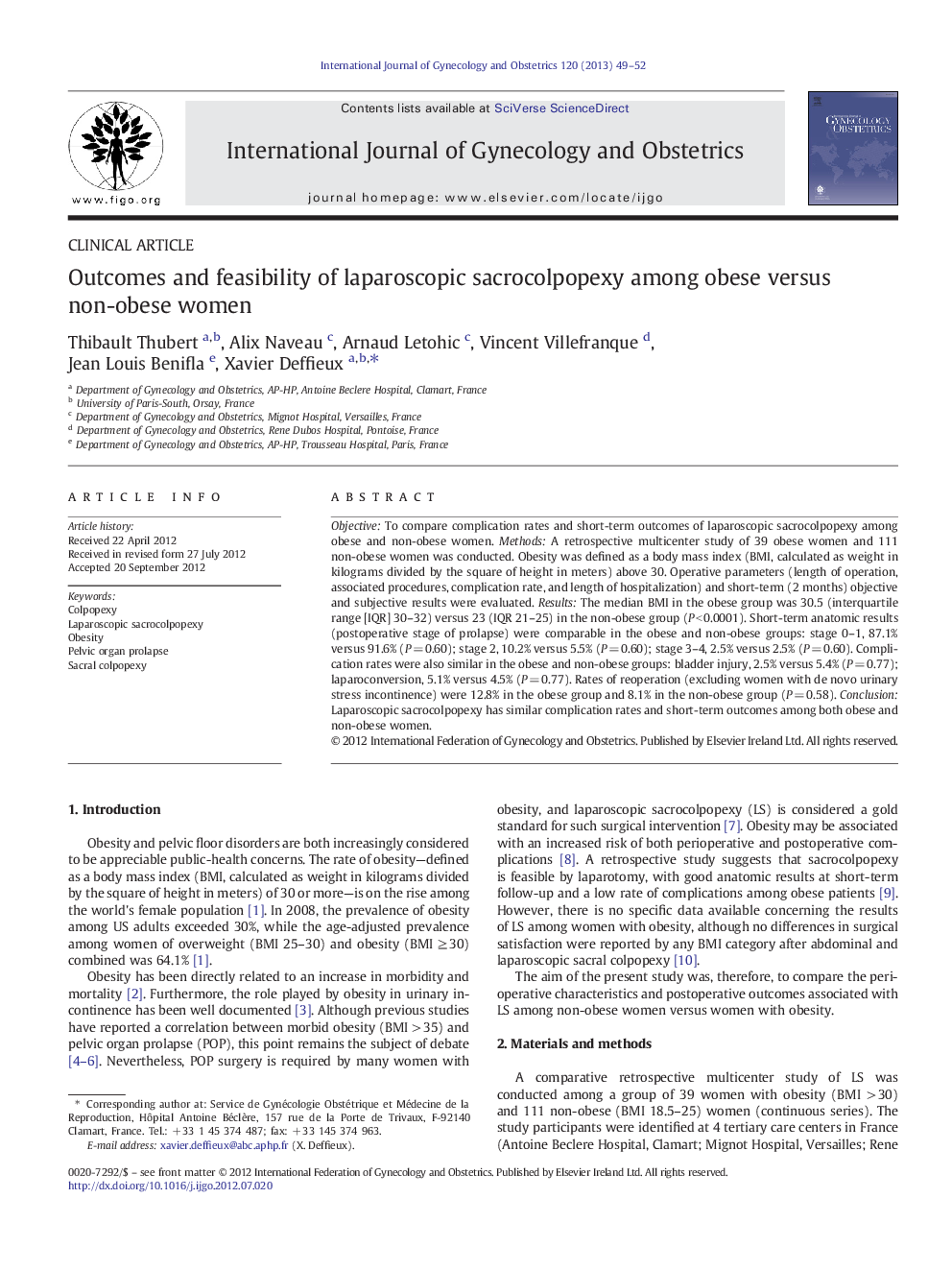| Article ID | Journal | Published Year | Pages | File Type |
|---|---|---|---|---|
| 3953271 | International Journal of Gynecology & Obstetrics | 2013 | 4 Pages |
ObjectiveTo compare complication rates and short-term outcomes of laparoscopic sacrocolpopexy among obese and non-obese women.MethodsA retrospective multicenter study of 39 obese women and 111 non-obese women was conducted. Obesity was defined as a body mass index (BMI, calculated as weight in kilograms divided by the square of height in meters) above 30. Operative parameters (length of operation, associated procedures, complication rate, and length of hospitalization) and short-term (2 months) objective and subjective results were evaluated.ResultsThe median BMI in the obese group was 30.5 (interquartile range [IQR] 30–32) versus 23 (IQR 21–25) in the non-obese group (P < 0.0001). Short-term anatomic results (postoperative stage of prolapse) were comparable in the obese and non-obese groups: stage 0–1, 87.1% versus 91.6% (P = 0.60); stage 2, 10.2% versus 5.5% (P = 0.60); stage 3–4, 2.5% versus 2.5% (P = 0.60). Complication rates were also similar in the obese and non-obese groups: bladder injury, 2.5% versus 5.4% (P = 0.77); laparoconversion, 5.1% versus 4.5% (P = 0.77). Rates of reoperation (excluding women with de novo urinary stress incontinence) were 12.8% in the obese group and 8.1% in the non-obese group (P = 0.58).ConclusionLaparoscopic sacrocolpopexy has similar complication rates and short-term outcomes among both obese and non-obese women.
